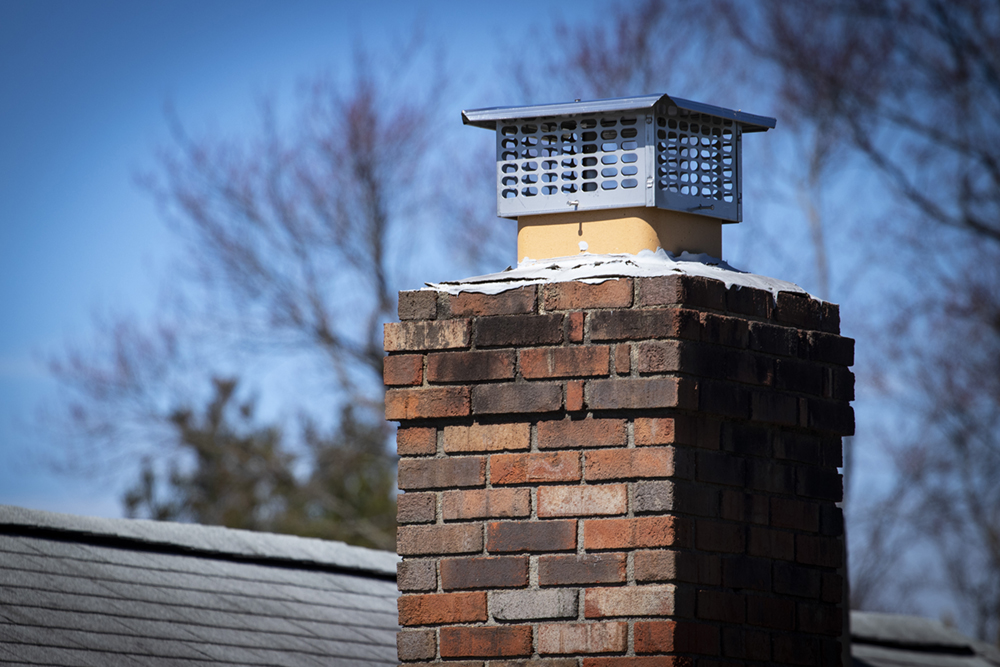Chimney & Fireplace
Warning Signs
Learn how to detect the warning signs of a chimney fire and carbon monoxide to keep your home and family safe.

Warning Signs
Learn how to detect the warning signs of a chimney fire and carbon monoxide to keep your home and family safe.

Some chimney fires will go unnoticed by homeowners and will extinguish themselves after a few minutes. Other more noticeable fires usually have a popping sound like you would hear when word burns, only much louder. There also may be a low, rumbling sound emitting from the chimney during fires.
Visually, you may be able to see flames or thick smoke being emitted from your chimney even after the fire in the firebox has already been extinguished. Regardless of which characteristics of a chimney fire become apparent the best course of action to take is to immediately get out of the house and call the fire department.
If you can do so safely, it is also a good idea to start spraying down the roof of your home with a garden hose to keep the fire from spreading. After the fire has been completely extinguished it is important to get a chimney inspection as soon as possible to determine if there is any structural damage or to clean out any creosote that may still be left after the fire.
Carbon monoxide is a colorless and odorless gas that is a by-product of incomplete combustion. Regardless of whether the fuel being burned is wood, natural gas or oil, carbon monoxide can be a serious threat to the occupants of a home.
Because carbon monoxide cannot be detected until symptoms of poisoning start to set in, the gas can quickly build up in a house without the residents even realizing it. Mild carbon monoxide poisoning symptoms often resemble the flu and could be overlooked as a result. Acute carbon monoxide poisoning can lead too dizziness, headache, nausea, vomiting, and death within about three minutes to two hours, depending on the levels.
The best defense against carbon monoxide poisoning is a carbon monoxide detector and a chimney inspection to investigate any blockage that may be stopping the proper flow of gases from a home.
Chimney odors in the spring and summer months are aggravated by the increased heat and humidity, especially after it rains. An odor coming from your chimney typically is either a dead animal or an excess build up of creosote. Regardless of which one it is you should get your chimney inspected as soon as possible in order to identify the odor and eliminate the problem.
If the problem is creosote, a chimney cleaning may not get rid of the odor entirely. When creosote forms it will permeate the masonry of the fireplace and is difficult to remove. The next best alternative to eliminating odor in a chimney is to prevent it from coming into your home. A damper located at the throat of the fireplace is an effective impediment to air flowing from a chimney into the rest of a home.
- Be sure to install a carbon monoxide (CO) detector on every level of your home, especially outside of sleeping areas. Check you carbon monoxide detector at the beginning of every heating season. CO detectors should not be installed in attics or basements unless they include a bedroom.
Read more from the United States Consumer Product Safety Commission.
- Have your chimney cleaned or inspected on an annual basis. The National Fire Protection Association Standard 211 says, "Chimneys, fireplaces, and vents shall be inspected at least once a year for soundness, freedom from deposits, and correct clearances."
- Install a chimney cap to keep out debris, water and animals. A chimney cap with a spark arrestor can prevent embers from escaping and landing on your roof, potentially causing a roof fire.

- Create a draft during cold months by lighting the top of a rolled newspaper and holding it close to the throat of the chimney for a few minutes. This will ensure smoke goes up through the throat and does not billow out of the firebox into the house
- Get a chimney inspection if there has been any structural damage to the house or the foundation (such as the earthquake in Baltimore during the summer of 2011).